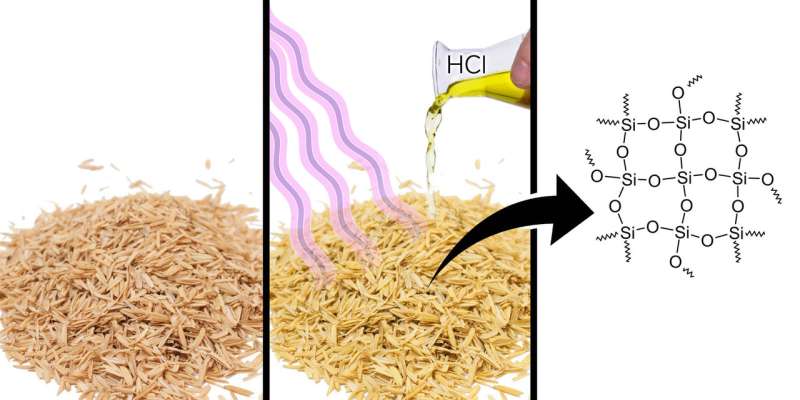

| Date | 19th, Oct 2018 |
|---|
 A chemist from RUDN developed a method to obtain high-porosity silicium dioxide from rice husk. Credit: Allen Dressen
A chemist from RUDN developed a method to obtain high-porosity silicium dioxide from rice husk. Credit: Allen Dressen
A chemist from RUDN has developed a method to obtain high-porosity silicium dioxide, a base for nanocatalysts used in different types of organic reactions, from rice husks. The results of the study were published in ACS Sustainable Chemistry & Engineering.
Porous silicium dioxide is a nanomaterial that is in high demand in the chemical industry. It is used as a base for catalysts and as an additive agent for division and delivery of other compounds including medicinal drugs. Although it is widely spread in its average solid form, it is difficult to obtain as a porous material. As a rule, it is manufactured using etheres of silicic acids at high temperatures. Both the synthesis of such ethers and their processing are energy-consuming and bad for the environment.
Rafael Luque, a visiting scholar at RUDN, together with his colleagues from the University of Cordoba (Spain) suggested a method of obtaining silicium dioxide from a cheap and eco-friendly source—rice husk. Its silicium dioxide content reaches 20 percent. The husk amounts to almost 25 percent of rice weight, and is usually burned down.
To obtain silicium dioxide from a biological source, the chemists used a combined mechanical and chemical approach. First, they ground the husk into powder. Then, using microwave radiation and an acidic solution, they removed extra substances such as cellulose. After baking at 550°С, the scientists obtained pure biogenic silicium dioxide. They used it to create a catalyst by adding iron nanoparticles. The catalyst proved to be effective in two reactions: benzyl alcohol oxidation and toluene alkylation.
"We managed to obtain high quality materials that can be used in cements, binder solutions, and catalysts. The development was patented, and we are currently discussing the prospects of its industrial use," says Rafael Luque, director of the Center for Molecular Design and Synthesis of Innovative Compounds for Medicine, and a visiting scholar at RUDN
More information: Ana Franco et al. Integrated Mechanochemical/Microwave-Assisted Approach for the Synthesis of Biogenic Silica-Based Catalysts from Rice Husk Waste, ACS Sustainable Chemistry & Engineering (2018). DOI: 10.1021/acssuschemeng.8b01738
Citation: Chemist obtains a nanocatalyst base from rice husk (2018, October 19) retrieved 22 August 2022 from https://phys.org/news/2018-10-chemist-nanocatalyst-base-rice-husk.html
This document is subject to copyright. Apart from any fair dealing for the purpose of private study or research, no part may be reproduced without the written permission. The content is provided for information purposes only.
